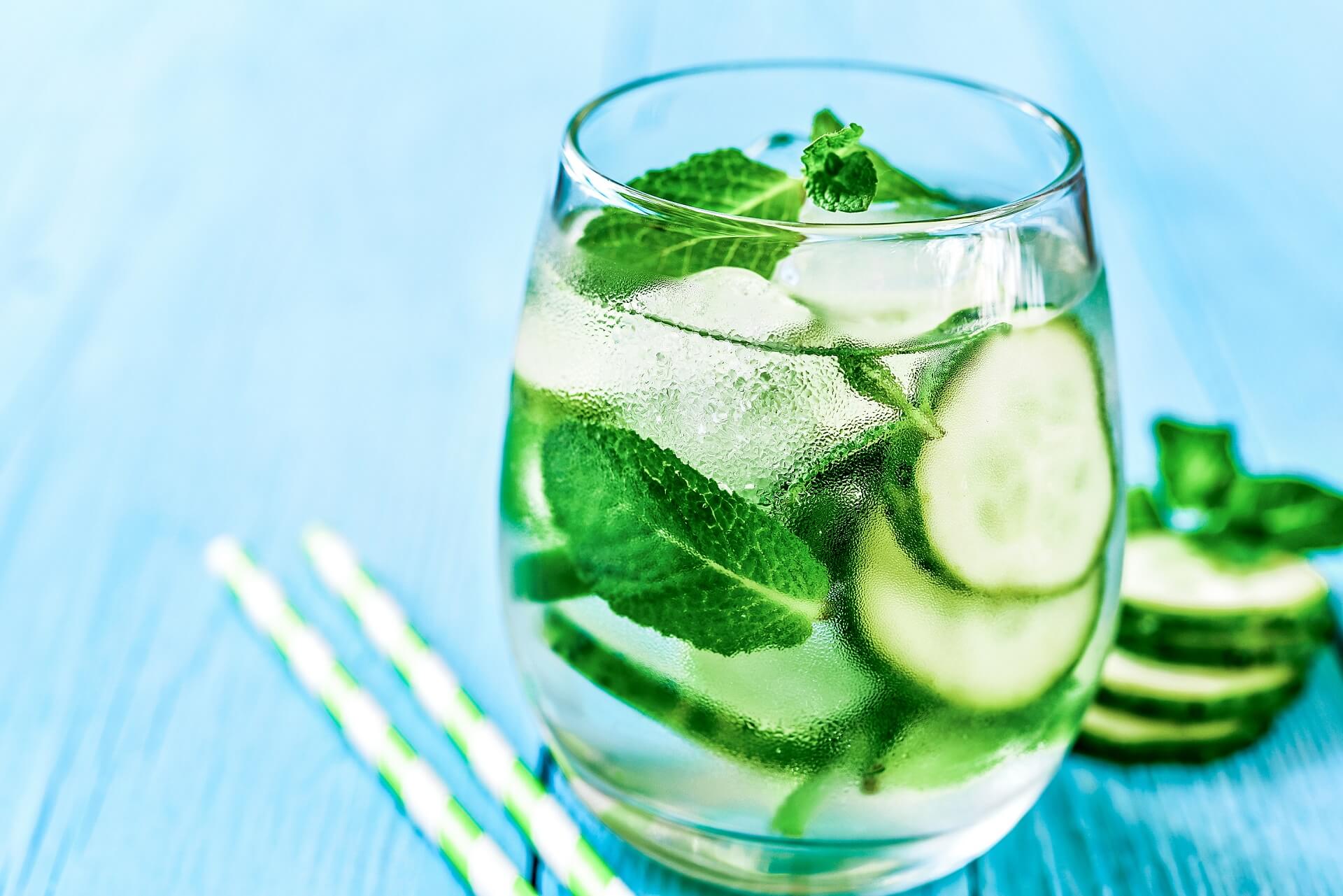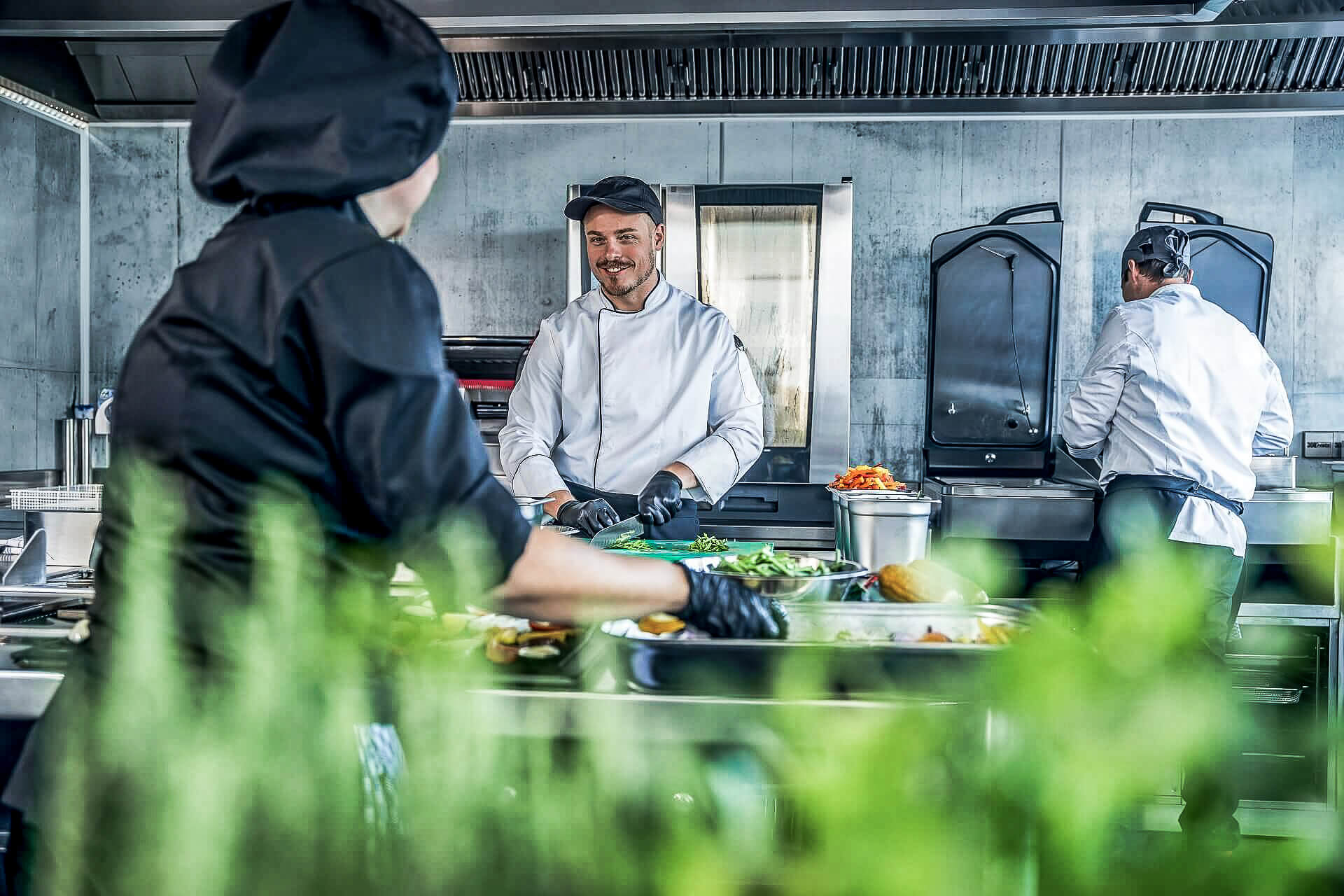As we know, conceptual nitpicking belongs to the food industry like garlic to escargots. From the infamous Cassis de Dijon decision in the 70s right through to the bombastic semantics surrounding vegan burgers and soy drinks, the food business is subject to the most meticulous language regulations, which causes constant head shaking among food manufacturers and restaurateurs alike.
This makes it all the more surprising that even in 2020 we still have culinary terms that are as vague as they are ubiquitous. For example, “aromas” or “essence,” to name an even more extreme example. Sure, if a pretentious critic or a chef with an affinity for fancy words talks about the “essence of a dish,” you more or less know what they mean. But what exactly is an essence?
The world-famous creator of Grande Cuisine, Auguste Escoffier, whose influence can scarcely be overestimated, defined it as follows: “Essences are to a certain extent boiled down stocks with an extremely strong taste. They are therefore nothing more than regular stocks, which are prepared with much less liquid in order to concentrate the flavor to an even higher degree.” At least that is what it says in his legendary Guide Culinaire, published in 1903. Admittedly, Escoffier’s definition is a little surprising nowadays. For all the vagueness of the term, today’s average foodie thinks of the word essence as something like distilled droplets, which are carefully dripped from eyedropper bottles to give a dish its final aromatic kick. However, over 90 years later this definition has not changed much. Hervé This-Benckhard, who created a fundamental work with his book “Rätsel und Geheimnisse der Kochkunst naturwissenschaftlich erklärt” (Riddles and Secrets of the Art of Cooking Explained Scientifically) published in the mid-1990s, summed it up as follows: “An essence is obtained by reducing a seasoned brew or marinade.” The German Duden dictionary definition is somewhat more masterful and contemporary: “Concentrated [alcoholic] solution of mostly vegetable substances, particularly essential oils.” However, the question remains if there is perhaps a basic consensus on what exactly an essence is in gastronomy and, if this is the case, is it equally true for restaurants and bars? If not, what are the differences? And in general, what kinds of things can you do with essences?
Sugar instead of alcohol
“What an essence is isn’t really properly defined by food law,” says Hariolf Sproll, and he should know. He has been developing a variety of his own essences for years in his Ulm bar Rosebottel, which have been well received by the public and media.
Sieh dir diesen Beitrag auf Instagram an
“However, in purely legal terms, what we are making is referred to as a syrup,” explains Sproll. “But this is only because we achieve shelf life through sugar. Otherwise, what we make is of course completely different compared to the syrup you buy at the supermarket.” Sproll specifically described this by saying, “In principle, the goal is to give the product a long infusion time. This is the only way we can extract the full taste from a food product. Of course we make many different essences. Depending on the type, it takes between twelve and 96 hours.” Sproll explained this tedious, flavor-condensing process using the most important flavor carrier in Sproll’s essence kingdom – the lemon peel. “First, the lemon peel is placed in sugar. It is important to use only the zests and not the white part of the peel, which is closer to the fruit. This is because the zest has the most flavor while the white part tastes bitter. The sugar then extracts the taste from the peel.” It’s worth mentioning that Sproll has mainly specialized in non-alcoholic essences. If it were an alcoholic essence, the sugar extracting role would be taken over by high-proof alcohol.
But let’s get back to zero percent lemon peel. “The marinated peels form a liquid, and the whole thing is now placed in water and heated to 140 degrees Fahrenheit (60 degrees Celsius). It only is heated until it reaches 140 degrees, and then it’s turned back off. After this, it is allowed to settle for 48 hours. It is then strained, more citrus juices and sugar are added and finally, it’s heated to almost 160 degrees Fahrenheit (70 degrees Celsius). The second heating is mainly to improve shelf life, similar to pasteurizing milk.” This procedure is to a certain extent the basic building block of Sproll’s essence production. Sure, in the case of tonic essences, there are different herbal approaches with various infusion times, including those that will become too concentrated if it takes too long. But what about high-percentage essences?

Image: AdobeStock | lilechka75
Watch out, only one drop at a time
“In the end, alcohol is a taste driver, like oil in the kitchen, for example,” says Fabian Heinßen, Thomas Henry’s Sales Manager for Gastronomy in Northern Germany. Last year, the premium bitter lemonade company from Berlin brought three essences onto the market, which were developed together with national bar celebrities such as Karim Fadl, Michael Blair, Sven Riebel, Boris Gröner and Arun Naagenthira Puvanendran. These three were woodruff, wild mushroom and sea buckthorn. Heinßen explains, “To crystallize the clear taste as much as possible, alcohol must be added and everything reduced so that in the end there is a clear aroma with no alcohol left behind. Similar to a jus, once the red wine is reduced, there is no more alcohol in it, but it tastes much stronger and better.” The range of uses for essences in bars is versatile, but can be particularly narrowed down to its creative uses in the filler area. “A Manhattan, for example, can be perfectly combined with the umami truffle note of the wild mushroom, Gin Fizz with the fine acidity of the sea buckthorn essence and a whisky sour can be given additional complexity with the woodruffle. However, it should be mentioned that in contrast to the alcohol-free “essences” created by Hariolf Sproll, the operation is performed here drop by drop: three to four drops to 8.5 ounces (250 milliliters), to be precise. Heinßen says there are also chefs – at least in Hamburg – who are known to give their mushroom pan the final flavor kick with his wild mushroom essence, for example. However, Thomas Henry’s essences are not deliberately and actively marketed for use in the kitchen. This poses the question what role essences play today in the kitchens of top gastronomy.
Philosophy as an equaliser
“The essence usually goes well with fish or meat,” says one of the best in the business, Bobby Bräuer from the two-star Bobby Bräuer Esszimmer restaurant in Munich. He is one of the few whose menus explicitly feature essences.
Sieh dir diesen Beitrag auf Instagram an
Pea essence, potato essence, onion essence and so on can be found on both current and less-recent menus. In Bräuer’s gourmet temple, they serve as an alternative to a jus or a thickened sauce with cream or crème fraîche. Bräuer continues, adding, “That’s why an essence makes everything easier and at the same time is very potent, reduced and supportive. For example, in summer, our lavender essence with chicken is a great combination.” It is prepared like a jus, then purified like a consommé, and then boiled down again. The amazing thing here is that when it comes to essences, Bräuer uses a slightly higher amount in a dish than he would use jus. “But you have to be careful. There’s a reason why an essence is most definitely not a broth, it’s way too strong for that. An essence is much more something between a broth and a sauce. That’s basically how you can describe it.” One of Bräuer’s most successful essences is an onion essence, which he adds to rabbit. Just like a jus, an essence takes three days to prepare, and it is by no means less time-consuming, as Bräuer’s explanation illustrates. “First you make a light caramel with honey,” says the kitchen wizard. “Then you add onion cut into strips and caramelize it, deglaze it with some vinegar and let it reduce. Afterwards you add white wine and let it reduce again before topping it up with light rabbit stock. While it’s cooking, I add some orange, which gives it an extra freshness. Now I bring it to the boil again and add spices. Indian cinnamon bark goes very well with onion. It is not as sweet as the normal cinnamon we use here, but has a slight spiciness. Apple also taste great with it. Everything is now simmered for three to four hours at a very low heat, then strained and compressed. I also stew onions together with white poultry meat, mostly turkey breast, some salt, white leek and celery. This is now my clarifying mass, which I now use to clarify the first onion batch, resulting in an onion consommé. So now I just do that and let it sit for several hours. On the third day I take a new approach with caramelized onions, which I just allow to steep a bit. I then greatly reduce the whole thing again, strain it once more, and that’s it. I now have an extremely strong essence that tastes great and is light at the same time.”
From alcohol-free de-jure syrups to forest essences and textural hybrids – it seems as if the concept of essence is infinitely stretchable, or better said, it can be clarified. On the other hand, however, all these different approaches have one thing in common: they concentrate taste into a minimum of quantitative volume. In this way they prove that they are not subject to endless arbitrariness, but rather that they do justice to the philosophical concept of essence that the German Duden dictionary defines as, “The most imporant part of something, it’s core.”












